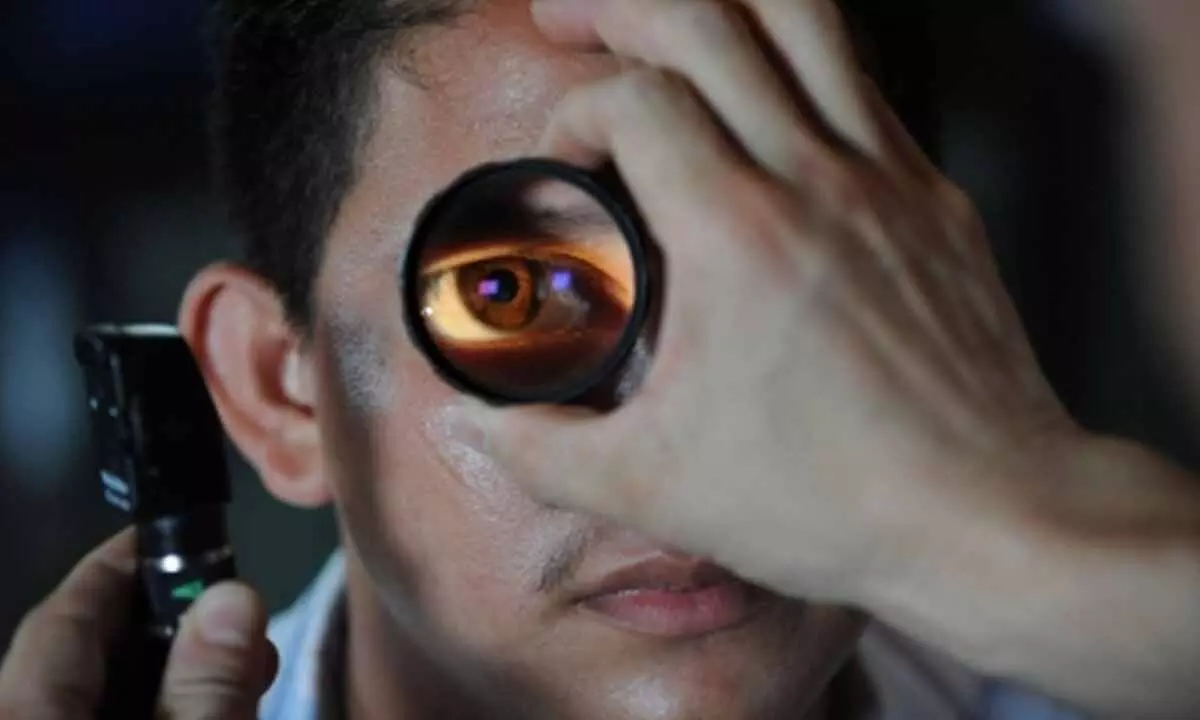Live
- Thousands Pay Tribute to Lance Havaldar Anoop Poojary in Udupi
- People should take advantage of Pradhan Mantri Surya Ghar: Muft Bijli Yojana: PM
- Tata Group to create 5 lakh manufacturing jobs over next half decade: N. Chandrasekaran
- Hansika’s charm remains undeniable
- Housing Sales Decline 4% in 2024, but Sales Value Rises 16% in India’s Top Cities: ANAROCK
- VHP to launch campaign from Jan 5 to free temples from govt control
- Israeli far-right minister visits flashpoint Jerusalem holy site, sparking criticism
- Keralites gulp down liquor worth Rs 152 crore over Christmas period
- Nani exudes style & intensity in ‘HIT 3’ new poster
- Journalist-writer Dr Rentala Jayadeva comes with a book ‘Mana Cinema.. First Reel’
Just In

Long known to be linked with memory, a team of international researchers now showed the association of a baffling constellation of visuospatial symptoms like judging distances, distinguishing between moving and stationary objects as the first signs of Alzheimer’s disease.
New York: Long known to be linked with memory, a team of international researchers now showed the association of a baffling constellation of visuospatial symptoms like judging distances, distinguishing between moving and stationary objects as the first signs of Alzheimer’s disease.
According to researchers, led by University of California San Francisco (UCSF), who led the first large-scale study of about 1,000 people with posterior cortical atrophy (PCA), the symptoms occur in up to 10 per cent of cases of Alzheimer’s disease.
Posterior cortical atrophy (PCA) overwhelmingly predicts Alzheimer’s, the researchers said in the paper published in the Lancet Neurology with participants from 16 countries.
Some 94 per cent of the PCA patients had Alzheimer’s pathology and the remaining 6 per cent had conditions like Lewy body disease and frontotemporal lobar degeneration.
In contrast, other studies show that 70 per cent of patients with memory loss have Alzheimer’s pathology.
Unlike memory issues, patients with PCA struggle with judging distances, distinguishing between moving and stationary objects and completing tasks like writing and retrieving a dropped item despite a normal eye exam, said Marianne Chapleau, of the UCSF Department of Neurology, the Memory and Aging Center and the Weill Institute for Neurosciences.
Most patients with PCA have normal cognition early on, but by the time of their first diagnostic visit, an average 3.8 years after symptom onset, mild or moderate dementia was apparent with deficits identified in memory, executive function, behaviour, and speech and language, according to the researchers’ findings.
At the time of diagnosis, 61 per cent demonstrated “constructional dyspraxia,” an inability to copy or construct basic diagrams or figures; 49 per cent had a “space perception deficit,” difficulties identifying the location of something they saw; and 48 per cent had “simultanagnosia,” an inability to visually perceive more than one object at a time.
Additionally, 47 per cent faced new challenges with basic Maths calculations and 43 per cent with reading.
“We need more awareness of PCA so that it can be flagged by clinicians,” said Chapleau.
“Most patients see their optometrist when they start experiencing visual symptoms and may be referred to an ophthalmologist who may also fail to recognise PCA,” she said.
“We need better tools in clinical settings to identify these patients early on and get them treatment,” she said.
The average age of symptom onset of PCA is 59, several years younger than the typical memory symptoms of Alzheimer’s. This is another reason why patients with PCA are less likely to be diagnosed, Chapleau added.
Early identification of PCA may have important implications for Alzheimer’s treatment, the researchers said.

© 2024 Hyderabad Media House Limited/The Hans India. All rights reserved. Powered by hocalwire.com






